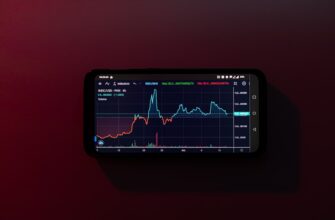What Are BTC Airdrops and Why They Matter
BTC airdrops distribute free cryptocurrency—often Bitcoin-based tokens or NFTs—to eligible wallets as a marketing tactic. Projects use them to boost awareness, reward early adopters, or decentralize token ownership. For users, they represent zero-cost opportunities to acquire assets with potential future value. However, with scams rampant, knowing how to safely collect BTC airdrops and access trustworthy lists is crucial.
How to Collect BTC Airdrops: Step-by-Step Guide
- Set Up a Secure Wallet: Use a non-custodial wallet like MetaMask, Trust Wallet, or a Bitcoin-compatible solution (e.g., Electrum). Never share your seed phrase.
- Find Legitimate Airdrops: Consult verified sources (see our airdrop list below) and official project channels. Avoid “too good to be true” offers.
- Complete Eligibility Tasks: These may include holding specific tokens, joining social media communities, or testing protocols. Follow instructions precisely.
- Connect Your Wallet Safely: Only interact with official project websites. Double-check URLs to avoid phishing sites.
- Claim Your Tokens: Submit your wallet address via the project’s portal. Some airdrops distribute automatically without action.
- Secure Your Assets: Transfer received tokens to a cold wallet. Monitor token listings on exchanges for selling opportunities.
Finding the Best BTC Airdrop List: Trusted Sources
Quality airdrop lists filter scams and highlight verified opportunities. Prioritize these resources:
- Dedicated Aggregators: Sites like AirdropAlert.com and Airdrops.io vet listings rigorously.
- Project Announcements: Official Telegram groups, Twitter accounts, and project blogs.
- Community Hubs: Subreddits (e.g., r/CryptoAirdrops) and Bitcointalk forums.
- Newsletters: Curated updates from platforms like CoinMarketCap or CoinGecko.
- Blockchain Explorers: Track token distributions on networks like Stacks (for Bitcoin-based projects).
Essential Tips to Avoid Airdrop Scams
- Never Pay to Participate: Legitimate airdrops are 100% free. Any request for payment is a scam.
- Verify Official Links: Check project websites via their authenticated social media.
- Use Burner Wallets: Dedicate a separate wallet for airdrops to isolate risks.
- Ignore DM Offers: Scammers impersonate admins—official teams won’t contact you first.
- Research Thoroughly</strong: Investigate project teams, tokenomics, and community sentiment before engaging.
BTC Airdrop FAQ Section
Q: What’s the difference between a Bitcoin airdrop and a BTC fork airdrop?
A: Bitcoin airdrops typically distribute new tokens (e.g., BRC-20 tokens) to BTC holders. Fork airdrops (like Bitcoin Cash) occur when a blockchain splits—holders receive new coins automatically.
Q: Do I need KYC to claim BTC airdrops?
A: Most don’t require KYC, but some regulated projects might. Always confirm before sharing personal data.
Q: How long does it take to receive airdropped tokens?
A: Distribution times vary—from instantly to weeks after a snapshot. Check project timelines.
Q: Are airdropped tokens taxable?
A: Yes, in most countries. Record token values at receipt and consult a tax professional.
Q: Can I participate in airdrops from any country?
A: Restrictions apply based on local regulations (e.g., US/Canada exclusions). Always review terms.
Q: What’s an “airdrop snapshot”?
A: A record of wallet balances at a specific block height. You must hold required assets during this snapshot to qualify.
By following this guide and leveraging reliable BTC airdrop lists, you can safely explore these opportunities. Stay vigilant, prioritize security, and never risk more than you can afford to lose in the volatile crypto space.








